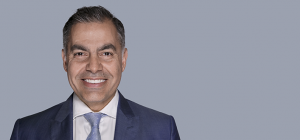Approach
Key Benefits
- A blended and diversified investment process driven by fundamental analysis for duration, yield curve and macro-economic factors and quantitative analysis for currency management and sector relative value analysis
- May invest in bonds and currencies of more than 20 different countries in seeking to exploit inefficiencies in markets around the world
- Proprietary risk budgeting and management tools guide portfolio construction
Performance
Performance
| As of 3/31/24 | 1 Month | 3 Month | YTD | 1yr | 3yr | 5yr | 10yr | Since Inception (8/01/06) |
|---|---|---|---|---|---|---|---|---|
| Composite Gross | 0.73 | -1.41 | -1.41 | 2.65 | -4.34 | -0.49 | 0.88 | 3.76 |
| Composite Net | 0.70 | -1.52 | -1.52 | 2.19 | -4.77 | -0.92 | 0.49 | 3.36 |
| Index* | 0.55 | -2.08 | -2.08 | 0.49 | -4.73 | -1.17 | -0.07 | 2.16 |
* Bloomberg Global Aggregate Index
Past performance does not guarantee future results.
Periods greater than one year are annualized. Performance data is considered final unless indicated as preliminary. Monthly performance is based on full GIPS Composite returns. Access the GIPS page for full composite details.
The Composite performance information represents the investment results of a group of fully discretionary accounts managed with the investment objective of outperforming the benchmark. Information is subject to change at any time. Gross returns are presented after all transaction costs, but before management fees. Returns include the reinvestment of income. Net performance is shown after the deduction of a model management fee equal to the highest fee charged.
Literature
Voya Global Bond Strategy Brief
Date: March 31, 2024
Includes Investment Commentary
Approved For: Financial Professional or Qualified Institutional Investor Use Only
Voya IM Fixed Income Profile
Date: December 31, 2023
Approved For: Financial Professional or Qualified Institutional Investor Use Only
Investment Team

Matt Toms, CFA
Chief Executive Officer
Years of Experience: 30
Years with Voya: 15

Sean Banai, CFA
Head of Portfolio Management
Years of Experience: 25
Years with Voya: 25

Brian Timberlake, PhD, CFA
Head of Fixed Income Research
Years of Experience: 21
Years with Voya: 21
Disclosures
Principal Risk
Foreign investing poses special risks, including currency fluctuation, and economic and political risks not found in solely domestic investments. Emerging market securities may be especially volatile. The strategy may use derivatives such as options and futures, which can be illiquid and may disproportionately increase losses and have a potentially large impact on performance. The strategy is subject to both credit and interest rate risk. The share price and yield will be affected by interest rate movements, with bond prices generally moving in the opposite direction from interest rates. High yield, below-investment-grade debt securities may include issues that are highly speculative and more volatile. To the extent that the strategy invests in mortgage-related securities, its exposure to prepayment and extension risks may be greater than investments in other fixed income securities. Other risks include but are not limited to borrowing/leverage risks, debt securities risks, non-diversification risks, risks associated with other investment companies, price volatility risks, inability to sell securities risks and portfolio turnover risks.
